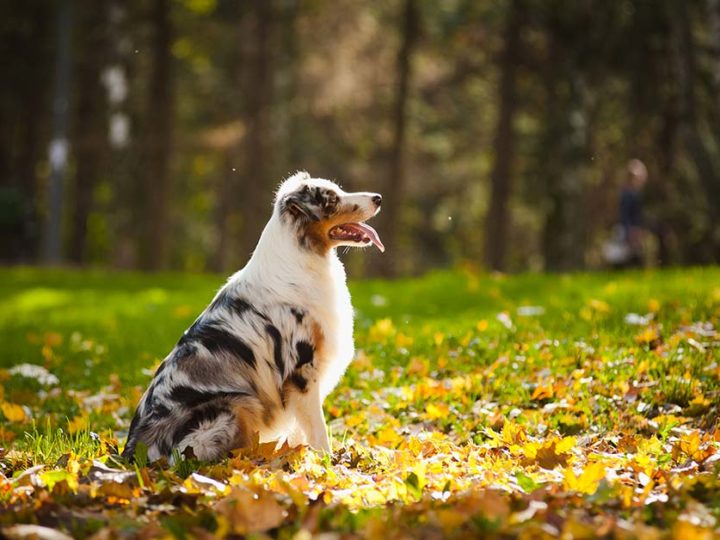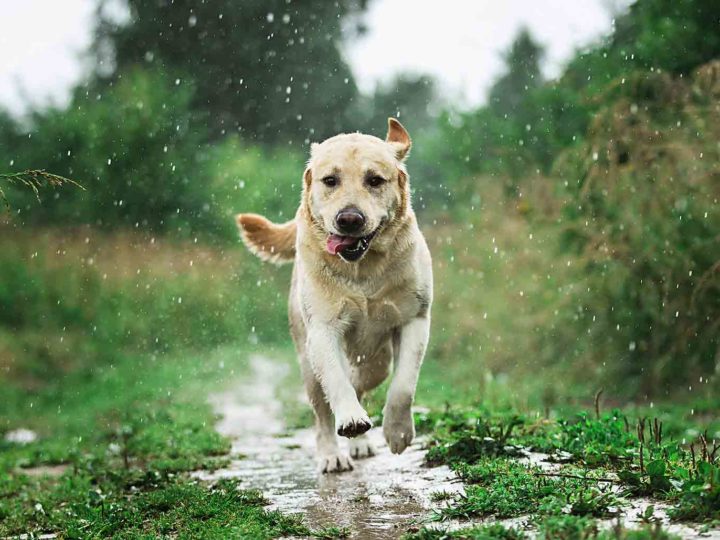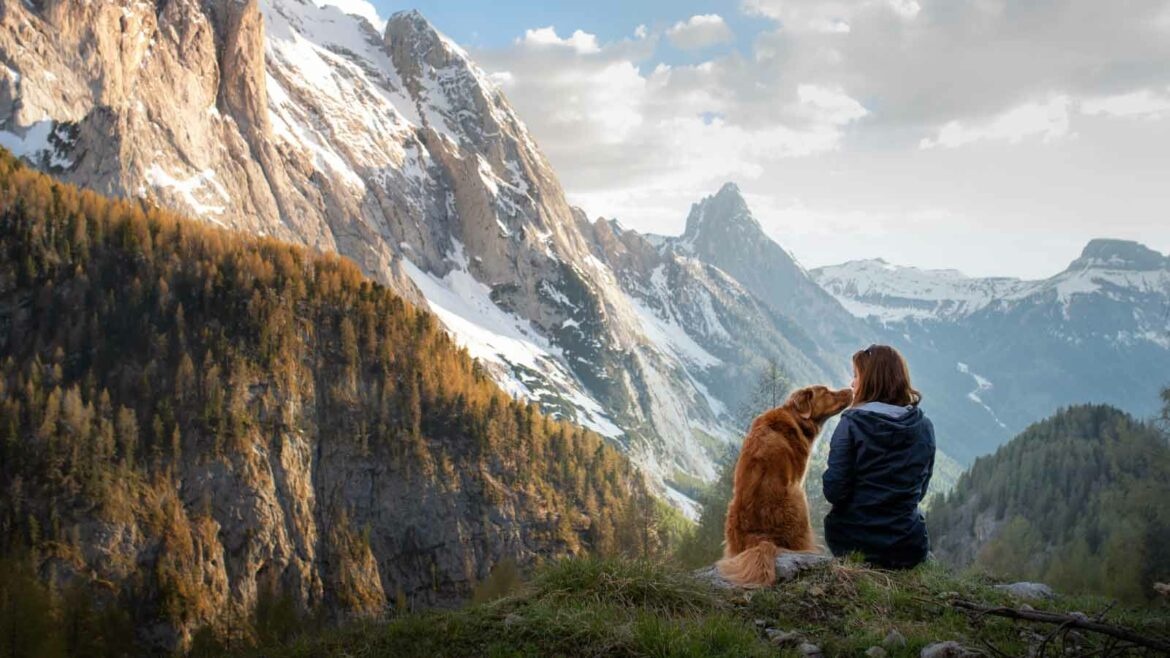
If you are looking for uncontaminated natural places with postcard landscapes, a slightly cooler climate and expanses of grass where you can rest, well… mountain is the ideal environment. For high altitudes lovers, dirt paths, natural waterways, screes and large steep meadows are commonplace. But what could make an experience like this even more special?
Of course, the company of your beloved dog!
Mountain areas can be the ideal habitat to strengthen the bond between your faithful four-legged friend and you. However, before leaving for your adventure on the peak, it is important to take some precautions to ensure your Fido and you live the best possible experience.
Actually the first rule at the mountains is “never let your guard down”: follow our advice and get ready for the coming excursion in the company of your furry friend.
Physical preparation and health checks
Before planning any hike, whether it’s a simple walk or a more challenging one, it is important to make sure your dog is in good health. A vet check-up will take a bit of time, but it will certainly be important to ensure a safe departure.
Evaluate the route based on your dog’s physical abilities: a puppy is not as trained as an adult dog and the joint structure is not yet fully formed and developed. Therefore, choose easy routes, with a terrain not too rough and increase the duration gradually.
It is also good to be aware that we all get older. Your dog’s age is advancing too and he may begin to experience natural fatigue. In fact, when they are young our furry companions are used to tirelessly run back and forth through woods and paths, but when they get a few years older it may be more tiring for them to face the excursion with serenity. So, before planning your holiday, think about your four-legged friend and try to understand whether it is a good decision for him, or whether a less demanding experience than the one you planned is more suitable.
Basic education
It is important that the dog has undergone a basic education process to be able to feel at ease in both known and unknown contexts, like the social one with people, strangers, other animals, or even new environments or noises. Getting your dog used to these changes can help improving the handling, but especially experiencing every situation with serenity.
It is certainly a great help to teach and train the dog to respond to your commands, especially when he’s in the company of other people or other animals, in order to be able to manage it correctly.
It’s not uncommon to encounter in the mountains specimens of local fauna such as roe deer, marmots or small hares who, if spotted by the watchful eye of your four-legged friend, could lead to useless and in some cases even dangerous chases.
Likewise, along the paths or in the places of arrival such as hut, cabins and bivouacs, you may find other people who have also taken their dog on an excursion.
For all these reasons, good basic education is essential: if you think your dog is an excellent listener you can also let him walk freely, but always keep his leash handy and possibly a muzzle just in case. As we will see more in detail later, in public places and therefore also in the mountains there is an obligation to keep the dog on a leash and to have a muzzle with you ready for use.
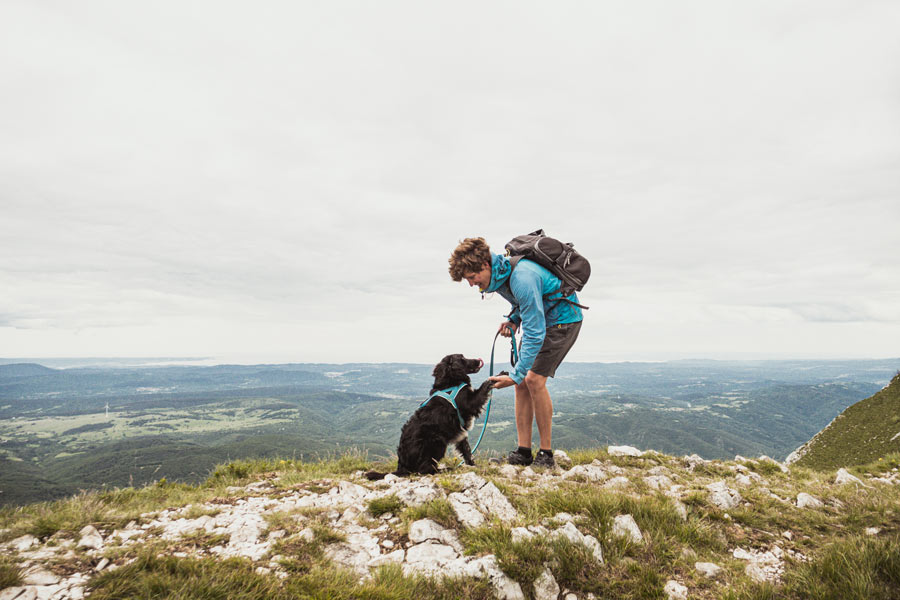
A dog that listens to your commands will be easier to handle in the mountains.
Adequate equipment
The time to prepare to the equipment for your mountain excursion has come. What to put in your backpack for your trusty companion?
First, let’s think about his primary needs: nutrition and hydration.
Depending on the duration of the hike and depending on his eating habits, prepare an adequate food dose, as well as a sufficient quantity of water for the day, also consider that along the route you may not find fountains to fill your water bottle.
Remember to include a practical foldable travel bowl in your backpack to let him drink quietly and, as far as possible, try to avoid he quenches his thirst in the puddles along the way, in order to avoid any contamination caused by not clean water.
A towel or blanket may also be useful to comfortably rest during your breaks.
Make sure that your dog’s collar has the identification tag – which he should generally always wear – with your telephone number and his name printed on it.
As already previously mentioned, don’t forget the harness or collar, a leash long enough to guarantee your dog a certain degree of freedom. Furthermore, remember that there are legal provisions about muzzle since there are contexts in which it is mandatory, so:
- you always have to take it with you;
- in case a dangerous situation for other people or animals occurs your dog has to wear it. Or also when a public authority makes an explicit request;
- use it for dogs not kept on a leash, when they are in the streets or in other places open to the public;
- combine it with a leash for dogs in public places and on public transport.
Protection against parasites
Another aspect to consider if you want to hike in the mountains are dangerous insects such as ticks. When walking through wooded environments, meadows, hilly or mountain areas it is easy to come into contact with an unpleasant encounter: ticks which nest wherever there is unkempt vegetation, grass, bushes or bunches of dry leaves.
Therefore, always remember to do the right prevention with the anti-parasitic therapy studied with your trusted veterinarian and, for a more complete action, use the natural insect repellent Tea Tree and Neem Oil Spray by Yuup!, which creates an effective shield by keeping parasites and annoying insects away with its intense scent.
Simply spray it on the coat of your four-legged companion every 2 hours to ensure a peaceful walk.
Route planning
Plan the route of your mountain hike accurately. Opt for paths that suit your dog’s abilities and conditions and check in advance whether there are any restrictions or special rules to observe.
Also consider distance and altitude and maybe opt for less crowded routes, with soft terrain for a better comfort for his little paws.
Check the weather forecast for the day the excursion is scheduled. It is important to check that bad weather and especially thunderstorms are not forecast precisely because dogs perceive more than us electrostatic charges caused by atmospheric agents. Furthermore, even the thunder loud noise or even the flash of lightning could disturb the dog since in an outdoor environment that is not the “safe and known place” like home, he could feel exposed and therefore in danger.
In Italy, luckily, there are lots of routes with different difficulties and lengths. From the Dolomites in Northern Italy to the Apennines of Central and Southern Italy… it’s truly hard to choose.
Get an updated geographical map of your destination and the maps with the paths and routes you wish to explore.
Now you are almost ready to leave!
Yes, almost, because before getting into the car it is advisable to get information and to consult the Italian regulations about places and ways to take your dog with you.
In fact, the Italian legislation does not unequivocally define when your dog can be left free or what behaviors to adopt in specific cases. Consequently, it is good to take at least three aspects into consideration:
- get information about the regulations in force in individual municipalities regarding the behavior to be followed in special areas such as natural parks and protected areas;
- consult the Martini Ordinance of August 6th 2013 which, among the various rules, reports the correct conduct to maintain when taking your dog in public;
- find out about any prohibition or permit imposed by mountain establishments such as restaurants, huts and cabins.
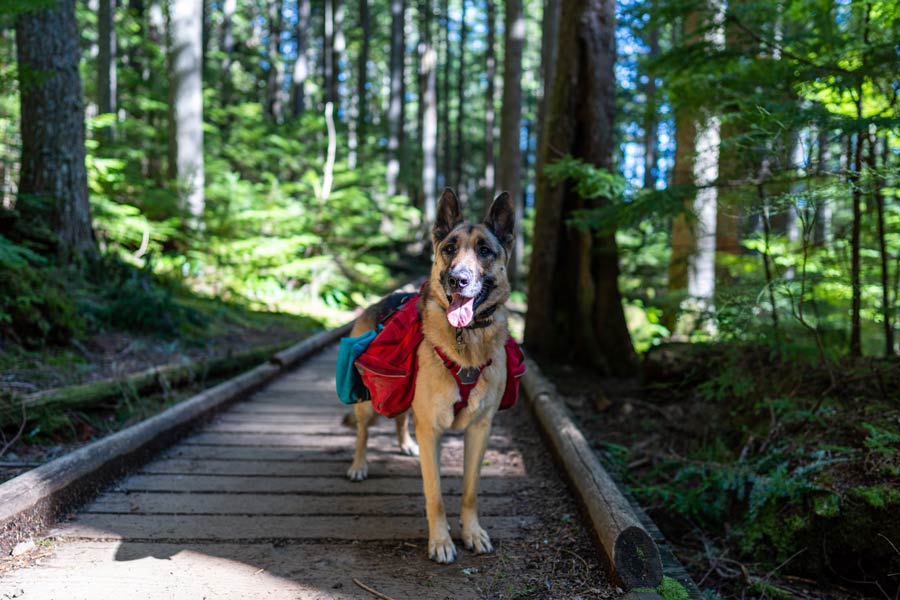
“Let’s get the backpack on and let’s hit the road, I’m ready too!”
Dog care once back
After returning back home it is advisable to follow a few tips in order to take care of your dog’s well-being after a long and busy day.
Check the potential presence of ticks and parasites on your pet’s skin and coat. If the insects are simply on the coat, just carefully brush his hair to smoothly remove them. While, if some ticks have managed to attach themselves to Fido’s skin, contact the vet for a safe removal to avoid any risks.
If there is no need for a vet visit, after a long day outdoors, your furry friend will certainly need a pleasant cleansing and a refreshing bath. In this case, we recommend using Yuup! Tea Tree and Neem Oil Shampoo to permanently remove even the last insects that inadvertently you may not have seen or removed with the brush.
To relive your recent wonderful excursion and to recall the environments explored together, try a few sprays of Forest, the new perfume by Yuup! for dogs and cats, with persistent notes of Pine Wood, Fern and White Musk and you will feel like if you were once again in the woods you explored during the excursion!
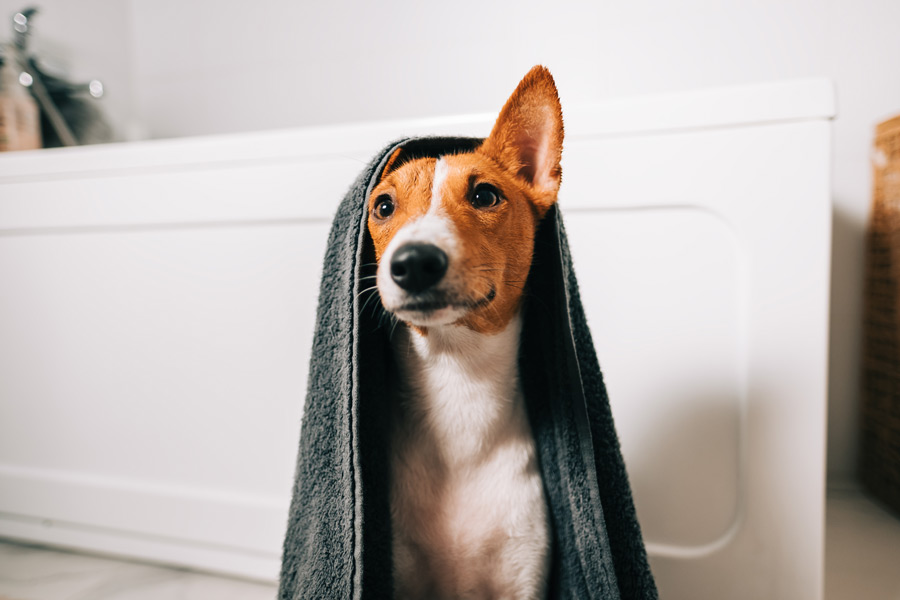
A nice bath and then a well-deserved rest after a long day!
Now that you have discovered all the secrets for an amazing mountain experience, all you have to do is launching into this adventure at high altitude together with your beloved four-legged heart!
Article written with the consultancy of Chiara Festelli, Canine Educator.




